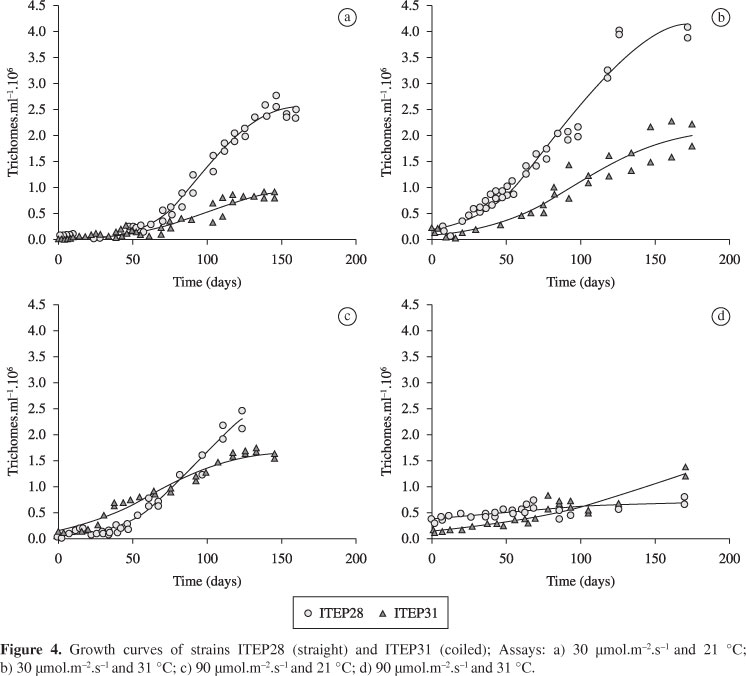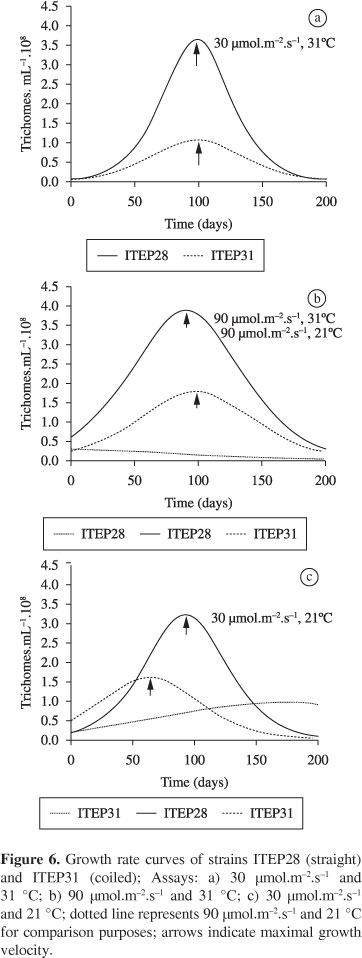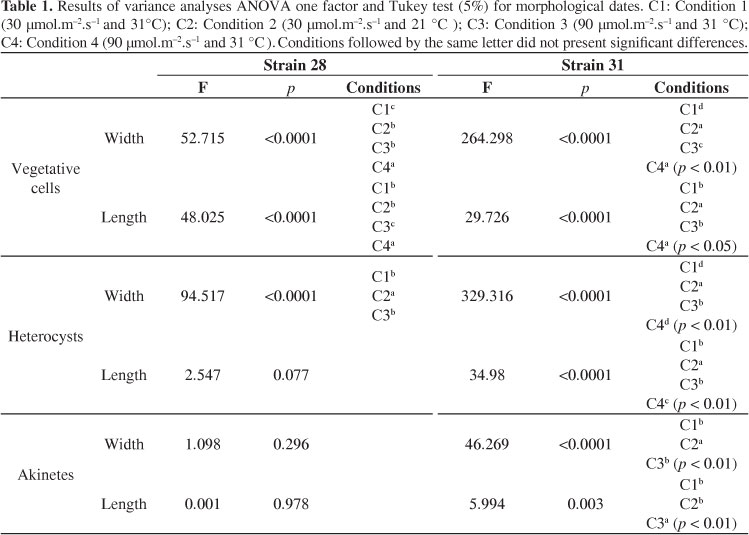Cylindrospermopsis raciborskii (Woloszynska) Seenayya et Subba Raju (Ordem Nostocales) is one of the most troublesome bloom-forming species in Brazil. Understanding the population dynamics of the different morphotypes of C. raciborskii (straight and coiled) could assist in the prediction of favourable conditions for the proliferation of this potentially toxin-producing species. The aim of the present study was to assess the effects of two different light intensities and temperatures on the growth rate and morphology of the trichomes of the straight and coiled morphotypes. For such, two non-toxin producing strains of C. raciborskii were used - one with a coiled trichome (ITEP31) and another with a straight trichome (ITEP28). The strains were cultured in BG-11 medium in a climatic chamber under controlled conditions. Two light intensities (30 and 90 µmol.m-2.s-1 ) were combined at temperatures of 21 and 31 °C and the growth rate and morphological changes were analysed. The morphotypes responded differently to the different temperatures and light intensities. Both strains exhibited faster growth velocities when submitted to higher light intensity and temperature. The lower temperature and higher luminosity hampered the development of both strains. Variations in cellular morphology and an absence of akinetes in both strains were related to the lower temperature (21 °C). The coiled morphotype demonstrated considerable phenotype plasticity, changing the morphology of trichome throughout its growth curve. Although molecular analysis does not sustain the separation of the morphotypes as distinct species, their different eco-physiological responses should be considered further knowledge of extreme importance for the population control of these potentially toxic organisms.
cyanobacteria; morphotype; growth curve; culture










